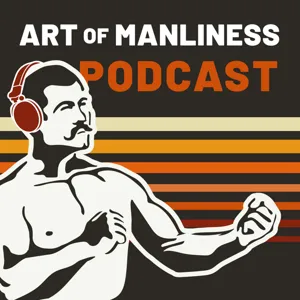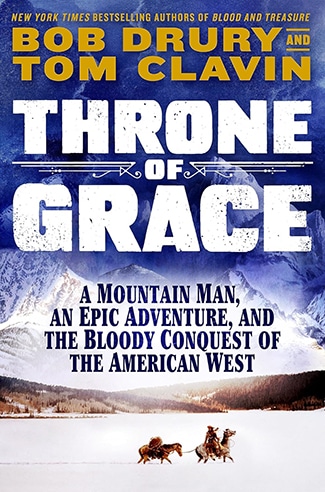Podcast Summary
Discovering the True Value of Old Baseball Cards: Expecting high value from old baseball cards may not be realistic, research their worth before selling.
The value of old baseball card collections may not be as high as some people once believed. Dave Jamison, author of "Mint Condition," shared his personal experience of trying to sell his old baseball card collection when his parents were cleaning out his old bedroom. He found out that despite having some rookie cards from the 1980s, such as Mattingly, Clemens, Puckett, and Ripken, the cards were worth very little money. This was a surprise to him since he had kept them with the expectation of using the money from their sale for significant purchases in the future. The industry's decline was traced back to the 1990s, and the origin of baseball cards was explored over a hundred years ago. The book started as a magazine article for Slate and expanded into a full-length work. This discussion highlights the importance of doing research before assuming the value of collectibles and the fascinating history behind baseball cards.
Baseball Cards Originated as Premiums for Tobacco and Gum Products: Baseball cards started as giveaways with tobacco and gum purchases, but evolved into a popular industry in the 1950s.
The origins of baseball cards date back to the 1880s when they were first packaged with tobacco products. This marketing technique was used to increase brand loyalty and sales. Kids would collect these numbered cards to complete sets, often purchasing more packs of cigarettes to do so. This practice was controversial due to the health risks associated with smoking. Over time, baseball cards transitioned from being premiums for tobacco or gum products to an industry in themselves. Golden ages of baseball card collecting include the 1880s, around 1910, and during the Great Depression when they were packaged with bubble gum. However, it wasn't until the 1950s when bubble gum companies like Topps bet heavily on baseball cards that they became a standalone industry.
The Baseball Card Industry's Hidden Monopoly: From the 1950s to the late 170s, Tops held a monopoly in the baseball card industry, using aggressive tactics to prevent competition and secure contracts with young talent.
The baseball card industry during the mid-1900s was far from the wholesome, all-American pastime it is often perceived to be. Instead, it was a cutthroat business where companies, such as Tops, engaged in aggressive tactics to secure contracts and sign young talent, effectively creating a monopoly that lasted for three decades. Tops' monopoly was so strong that it prevented other companies like Fleer and Bowman from manufacturing cards. The government eventually intervened, leading to the break-up of Tops' monopoly in the late 1970s and the subsequent boom of the 1980s, which introduced collectors to various brands like Fleer, Topps, and Donruss. This history reveals the gritty underbelly of the baseball card industry and the lengths companies went to secure their market dominance.
The Role of Collectors in Baseball Card History: Collectors like Jefferson Burdick and Mike Gidwitz have shaped baseball card history through their dedication, passion, and significant investments. Burdick's cataloging efforts led to the T-206 designation, while Gidwitz's purchases of rare cards fueled the secondary market industry.
That the history of baseball card collecting is not just about the companies that produced the cards, but also the collectors who shaped the hobby with their passion, dedication, and significant investments. Two notable figures are Jefferson Burdick, known as the "grandfather of card collectors," and Mike Gidwitz. Burdick, a relatively poor bachelor from Syracuse, spent his entire life traveling the country to collect cards of all kinds, organizing and cataloging them, and giving them names. His extensive collection, now at the Metropolitan Museum of Art, was the first attempt to document and categorize trading cards. Burdick's impact is still felt today, with the T-206 designation for cards coming from his cataloging efforts. Mike Gidwitz, on the other hand, is known for his enormous investments in rare baseball cards, including the famous Honus Wagner card, which he bought for $600,000 and later sold for a million dollars. Today, the secondary market for vintage high-priced baseball cards is a significant industry, with collectors like Gidwitz buying and selling cards as if they were fine art. These collectors' stories add depth and intrigue to the world of baseball cards, highlighting the dedication, passion, and financial investments that have shaped the hobby.
The allure of baseball cards lies in their historical significance, rarity, and the thrill of the hunt.: Super collectors are driven by the pursuit of rare, historically significant baseball cards, creating a thrilling and competitive hobby.
The passion and dedication of super collectors towards baseball cards is driven by the pursuit of the unknown and the beauty of these rare pieces. These collectors often carve out their own niches, whether it's completing individual sets or focusing on specific players. Some sets, like those from the late 1800s, still have undiscovered cards, making the search all the more intriguing. Competition is also a significant factor, with serious collectors knowing the whereabouts of rare cards and vying for them. The allure of baseball cards lies in their historical significance, rarity, and the thrill of the hunt. Despite the challenges of completing a collection, the pursuit itself is what matters most to these dedicated collectors.
The Baseball Card Industry's Spectacular Bubble: The baseball card industry experienced a bubble due to mass production and lack of scarcity, leading to a collapse with oversaturated market and surplus of common cards.
The baseball card industry experienced a bubble during the 1980s and early 1990s, similar to a tulip craze, due to mass production and lack of scarcity. The hobby grew rapidly as people hoarded cards, expecting them to increase in value. However, the oversaturation of the market led to a collapse, with 81 billion cards being produced annually. Everyone from card manufacturers to players' unions tried to capitalize on the trend, leading to a spectacular bubble. The baseball strike of 1994 marked the beginning of the industry's decline, and it has yet to fully recover. The hobby shifted towards adults, but the new cards are primarily aimed at kids, leaving collectors with a surplus of common cards and a scarcity of valuable, rare ones.
Baseball card collecting's demographic shift and challenges: Despite efforts to revive baseball card collecting, its future relies on attracting a new generation of collectors, as the hobby faces demographic shifts and intense competition from digital entertainment.
The baseball card collecting hobby is currently facing significant challenges due to its shifting demographic towards adults and intense competition from digital entertainment. The high prices of rare collectibles, such as the $20,000 Steven Strasberg gold refractor card, make it difficult for children to participate. Baseball card companies, like Tops, are trying to revive the hobby by simplifying their product lines, lowering prices, and introducing online fantasy baseball elements. However, these efforts may not be enough to compete with the allure of the internet and video games for kids' attention. The hobby's future relies on attracting a new generation of collectors, which is proving to be a significant challenge. Personally, I was a Yankees fan and collected team sets growing up, with Don Mattingly being my favorite player. My most cherished card from my collection is still my 1984 Tops rookie card of Don Mattingly.
The joy of cherishing childhood memories: Consider the sentimental value and joy of holding onto childhood items, rather than their monetary worth.
Dave shared a personal story about saving up for a baseball card as a child and the joy he still experiences when pulling it out to this day, despite its decreased monetary value. He encourages others to hold onto these memories rather than selling them, as they serve as reminders of simpler times and cherished childhood experiences. So, whether it's a baseball card, a toy, or any other item from the past, consider the sentimental value it holds and the joy it brings rather than its monetary worth. To learn more about the history of baseball cards and their cultural significance, be sure to check out Dave's book. And for more manly tips and advice, visit The Art of Manliness website at artofmanliness.com. Stay manly!










